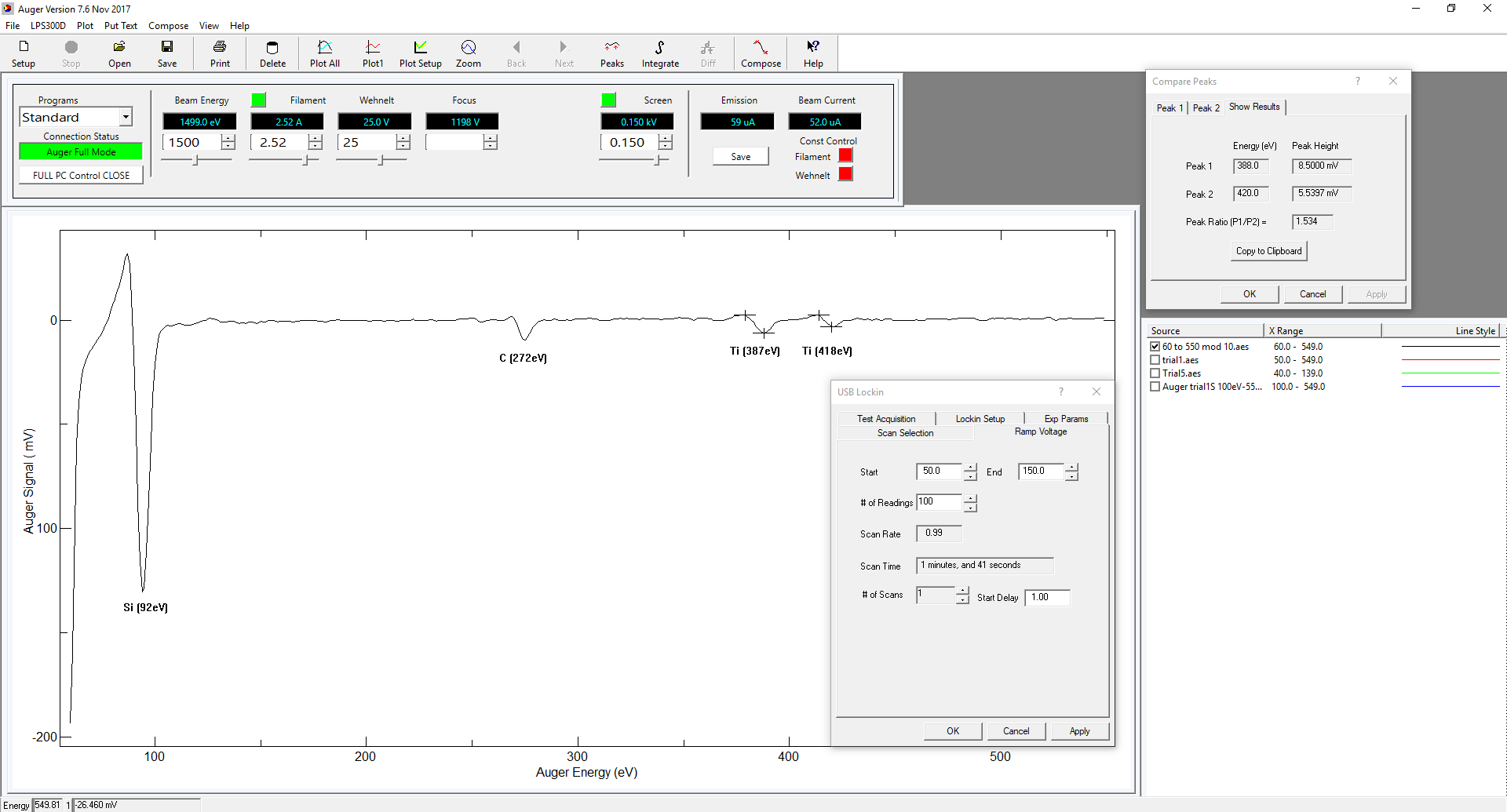

ocivm.com > Science & Applications > Surface Crystallography & Surface Science Fundamentals > Auger Electron Spectroscopy (AES)
The principle technique used to analyze the chemical composition of surfaces is Auger Electron Spectroscopy (AES). This technique determines the concentration of elements on the surface by measuring the energies of Auger electrons.
Click here to view an animation of the basic principle of AES.
When a beam of electrons is fired at the surface of the material, these beams simulate several interactions. One of those interactions is Auger Electron Spectroscopy. The principle of Auger operates by allowing a high-energy electron from the beam to eject an electron from its orbit creating an empty hole in the orbit. As this occurs, another electron from a higher orbit moves to fill the empty space. As the electron changes from a higher to a lower orbit, it releases energy. This energy might eject a third electron from another orbit. By measuring the energy of the emitter electron, called the Auger electron, the atom can be identified. Different atoms have different atomic orbits and therefore different Auger energies. One of the techniques for measuring the energy of the Auger electrons is the same as the LEED setup. It consists of the three grids and instead of the screen present in LEED, an electron collector is located in the Auger. The electron gun in the Auger technique also operates at a higher energy than in the LEED.
OCI Vacuum Microengineering Inc. offers Auger Data Acquisition Software. For specifications, configuration and more, visit the Auger Data Acquisition Software product page.
